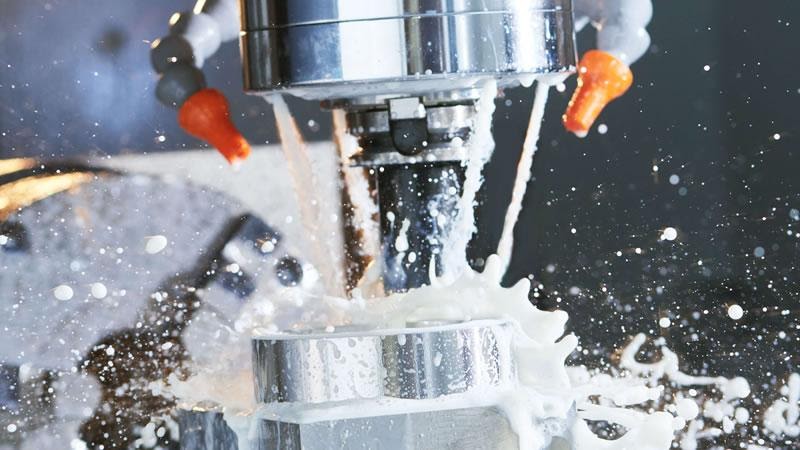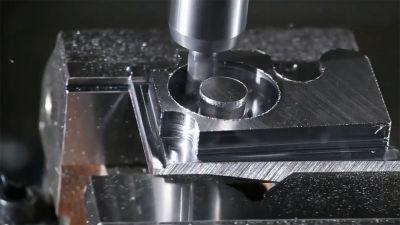Out of many beneficial CNC machining services, one of them is CNC milling. Serving to its utmost, this machining service in its full potential is there to make custom machine parts that need a sharp finish. Once treated with a CNC milling machine, the workpiece is attributed to certain characteristics and features that would help fulfill the due purpose. This article is all about the CNC milling services, from its definition to its procedures, machine types and types of milling, industries, and type of raw material used for CNC milling services.
Let’s get started!
What is CNC milling by definition?
By definition, CNC milling is referred to as a computer numerical-based control milling process that works to remove material from the workpiece and give it a characteristic shape and working feature. All this is done via rotating and cutting tools employed in CNC milling machines. The cutting, removing, and rotating tools produce a final workpiece i.e. a custom machined part. Basically, the CNC milling process is considered a secondary machining technique that is employed to give a perfect finish and shape to the workpiece. The tools i.e. cutting tools can be placed either way, horizontally, or vertically. Moreover, these tools are allowed to move in 5-axis.
The four-step CNC milling procedure
While working on the CNC milling machine, there is a four-step procedure. These steps range from designing the blueprint of the process via CAD software, this file is then converted into the CNC milling process with CAM software and according to this file, the milling machine is configured. Lastly, a computer-based software-driven CC milling machine then transforms the raw material to the final machined part. Here is the sophisticated production line:
- Designing a CNC Milling CAD model
- Converting the CAD model into a CNC milling program by Cam software
- Configuring the CNC milling machine according to the CAM model
- Cutting and transforming small pieces of the raw material to make the final workpiece (machined part)
Different types of CNC milling serving industries
CNC milling services is not a single regime procedure rather it consists of various CNC milling techniques that are used according to the workpiece/final product. The type of CNC milling applied to raw material also depends on the tolerances in the prototype and the size of production. Here are some of the commonly employed CNC milling procedures.
Plain Milling:
As the name implies, the type of milling procedure is applied to perform simple cutting or milling purposes. The tool used in this type of process is equipped with teeth on the periphery and it is present on-axis parallel to the workpiece.
Face Milling:
This type of milling procedure is performed on the workpiece to create flat surfaces and contours. In this process, the teeth equipped tool is present on the periphery, perpendicular to the workpiece.
Form Milling:
If you are intended to create irregular surfaces, curved surfaces or contours on the workpiece then face milling should be your targeted procedure. The process employs fly cutters as cutting tool e.g. convex cutters or concave cutters.
Angular Milling:
Angular milling is applied to the workpiece to create angles on it. The workpiece is neither parallel nor perpendicular to the machine.
Gear Milling:
In this process, workpieces like gears are created via CNC milling services.
Profile Milling:
The profile milling is utilized for its services to make rough or slanted shapes.
Apart from the above-mentioned milling procedures, there are some others that are employed according to the type, or workpiece and mode of production. Here they are:
Thread Milling, Gang Milling, Side Milling, End Milling, Saw Milling, Helical Milling, Cam Milling, Milling Keyways, Grooves, and Slot.

Components that make a CNC milling machine
Though CNC milling machine is a computer-operated version of working components that proceed with a command line provided by the software system. Yet this machine is made up of different components that together give it its due functionality. Here are some of those components along with their function in CNC milling services.
Machine interface:
As the name implies, it is the part on which the software-based command line is fed i.e. all the information about load, initiate, and execute is given to the machine interface which then commands other parts to work accordingly.
Column:
The part of the CNC milling machine where all other components are connected to give one definite structure to the machine. It consists of a base along with other parts involved in the milling procedure.
Knee:
It is the part connected to the column which further supports two important components i.e. worktable and saddle. Based on the type of milling machine, this component is attached to Z-axis and movable.
Worktable:
The worktable holds the workpiece and it is located on top of the saddle. It is adjustable components and its features depend on the type of milling machine employed for the procedure. It can be adjusted as vertical, horizontal, both, or in neither direction.
Spindle:
It is the component that holds the machining tool i.e. the cutting, milling tool. An electric motor is present to deal with the rotation of the spindle.
Arbor:
Arbor is a component in which multiple milling tools can be mounted simultaneously. It is a shaft shaped part that can hold various tools
Ram:
Used in vertical milling machines, this tool is present at the top of the fixed column and supports the spindle. It can take different positions to perform due functions in milling procedures.
Machine tool:
It is the main component attached to the spindle. It helps to remove the material from the workpiece during the milling operation. Depending on the type of milling procedure aimed, the machine tools vary on the basis of number, the spacing of teeth, diameter, arrangement, and geometry.

Various CNC milling Machines that are commonly used
Based on different milling machine components, there are several milling machines which are commonly employed to carry out the procedure in the regime of CNC milling services. Here in this section, milling machines are characterized on the basis of their specific features.
Knee-type:
The configuration of the knee type milling machine, it consists of a fixed spindle, vertically adjustable worktable supported by saddle and knee. This knee part can be either lowered or raised on the column to give specific positions to cutting tools to carry out appropriate functions on the workpiece. E.g. floor-mounted plain horizontal milling machine and bench type plain horizontal milling machine.
Ram-type:
As the name implies, a specific kind of ram is used in this milling machine. The ram is movable that is housed on the fixed spindle. It is allowed to move in two axes i.e. XY axes. E.g. floor-mounted universal horizontal milling machine and swivel cutter head milling machine.
Bed-type:
In this milling machine, the worktable is directly fixed with the machine bed. In this context, the workpiece is not allowed to move in y and z-axis directions. Here the workpiece is placed beneath the cutting tools and rest the movement of the machine depends on its capacity to move in XY and Z axes. These machines are further categorized as simplex, duplex, and triplex. This categorical distribution is based on the number of spindles employed in each machine.
Planer-type:
Sharing close resemblance with the bed type milling machines, the planar types have their worktable fixed to the spindle in the Y axis and Z axis, hence giving it a position to move along XYZ axes. It can support multi-tool mount i.e. particularly 4 at a time. This in turn reduces lead time.
A material guide that can be treated via CNC milling
Though the CNC milling services provide you with finished machined parts or the porotypes of all materials, yet it is the best machining procedure if the raw material or the workpiece is made up of the following.
- Metal (steel, bronze, stainless steel, aluminum, zinc, specialty alloys, titanium, industrial and heavy-duty metals, etc.)
- Plastic (PE, PP, PVC, Pthermosets, thermoplastics)
- Rubber (elastomers)
- Wood (chipboard)
- Ceramics
- Glass

Industries seeking the CNC milling services
Just like other CNC machining services serving their utmost to several industries around the globe, the CNC milling procedures and services are also working to their maximum to facilitate businesses and industries. Depending on the type of machined part, prototype scale, or production line, the following are some of the industries that are directly getting facilitated with the CNC milling services.
- Electronics industry
- Medical industry
- Automotive industry
- Marine industry
- Agricultural industry
- Machine tool industry
- Military industry
- High-tech industry
- Food industry
- Aerospace industry
- Semiconductor industry
Hence, CNC milling services are best to give your machined parts and prototypes a new dimension and fits in the big picture. Being a budding machining service, the CNC milling procedures are now carried out in machine shops to give a reliable, strong, and finished custom machined part.
Also Read: How Technology Is Enhancing The Manufacturing Industry?